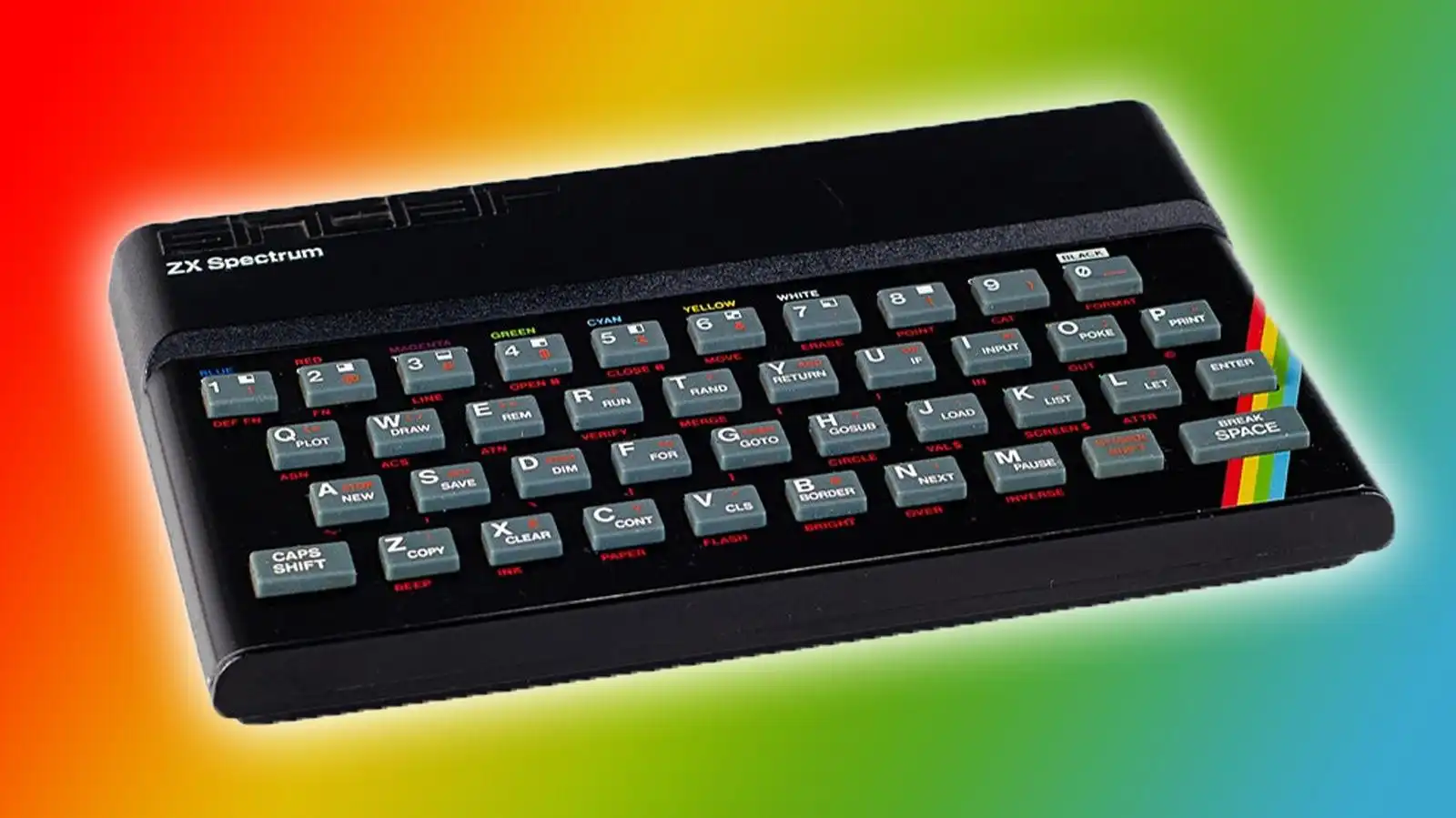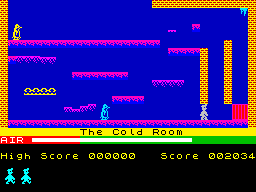ZX Spectrum: A colorful revolution in home computing
Launched in 1982, the ZX Spectrum, developed by Sinclair Research, was a groundbreaking home computer that transformed the UK’s gaming and computing landscape. The successor to the ZX81, the Spectrum brought color graphics and sound to a growing audience of home users and aspiring programmers. Often affectionately referred to as “the Speccy,” this compact and affordable computer inspired a generation of game developers, who harnessed its capabilities to create a vast and diverse library of games.

With its rubber-keyed design and an eight-color display (achieved by the ULA chip), the ZX Spectrum became an icon of British culture in the 1980s. It wasn’t just a computer; it was a cultural movement. Schools and homes across the UK embraced the Spectrum as both an educational tool and an entertainment device, making it one of the best-selling computers in Europe.
Affordable computing for the masses
The ZX Spectrum was notable not only for its technical specifications but also for its affordability. Available at an entry price of around £125, it was within reach of average households. The price point was part of Sinclair’s mission to make computing accessible to everyone, and it worked. The Spectrum quickly became the UK’s favorite home computer, popularizing coding and game development among young users who had never had such access to technology.
The Spectrum’s BASIC programming language enabled users to experiment and create their own games, providing a platform for creativity. Many of today’s British developers began their journeys on the ZX Spectrum, exploring its limitations and capabilities, line by line of code.
Manic Miner: A defining game for the Spectrum

One of the most iconic games on the ZX Spectrum was Manic Miner, developed by Matthew Smith and released in 1983. Manic Miner was a platformer that set players in the role of Miner Willy, tasked with navigating a series of increasingly challenging caverns filled with obstacles and enemies. Inspired by arcade classics, Manic Miner was among the first Spectrum games to incorporate colorful graphics, smooth animations, and a memorable soundtrack—all of which were highly innovative for the platform.
The game’s charm lay in its unique characters, creative level design, and humorous touches. Each cavern presented a new puzzle to solve, with careful timing and precise jumps required to avoid enemies and traps. The game’s lively graphics and catchy music showcased the Spectrum’s potential, making Manic Miner a landmark title for the system.
Manic Miner became a cultural phenomenon, and its success established the Spectrum as a viable platform for arcade-style gaming. It was followed by the equally popular sequel, Jet Set Willy, which continued Miner Willy’s adventures. Together, these games helped define the “Speccy” as a platform for creative, challenging, and quirky games that would captivate a generation of players.
The ZX Spectrum’s cultural impact
The Spectrum wasn’t just a popular computer; it was a symbol of the 1980s in the UK. Its affordability, accessibility, and versatility inspired a wave of home computing enthusiasm, sparking interest in technology, coding, and game development. The Spectrum’s iconic color palette and unique sound effects became synonymous with an era, shaping the childhoods of millions and creating a passionate community of users.
British gaming flourished thanks to the Spectrum, as bedroom coders took advantage of the platform’s open possibilities. Many future game developers and tech entrepreneurs attribute their careers to their first experiences programming on the Spectrum. It was a time when anyone with a little imagination could create something remarkable, and the Spectrum became a launchpad for many successful careers in tech.
The legacy of the ZX Spectrum
Although the ZX Spectrum was eventually overshadowed by more powerful systems, its influence on the computing and gaming industries is undeniable. It remains a beloved part of British culture, celebrated by retro enthusiasts and collectors who continue to explore its vast library of games. In recent years, various projects have revived the Spectrum experience, with modern remakes and emulations bringing its games to new generations.
The Spectrum’s legacy is one of accessibility, creativity, and community. It introduced countless people to the world of computing, democratizing technology and encouraging exploration. Today, it stands as a testament to the transformative power of affordable technology and the creative potential of early home computing.


